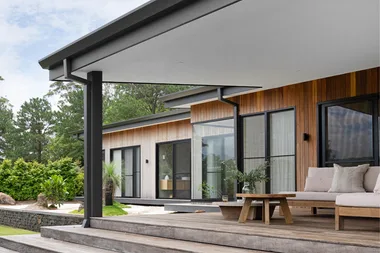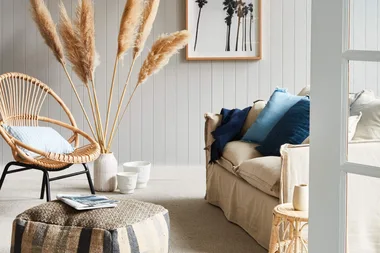Drawing on the characteristics of wabi-sabi – the Japanese principle of finding beauty in imperfections – and melding them with the warmth of Scandinavian style, the Japandi interior design trend delivers a soulful look that’s simple, light and playful.
Like nature itself, Japandi style is an aesthetic that continues to endure, such is the pared-back palette of warm whites, minimal timber finishes, lean furniture silhouettes with the occasional sleek black accent. Fabrics, too are drawn from nature, including flecked linens, 100% wool rugs and natural fibres, juxtaposed with furnishings in neutral textured stone, timber, and polished concrete.
The lack of fuss that comes with Japandi style is being embraced by interior design lovers new and old – established designers with a penchant for minimalism appreciate the warmth Japandi decor imbues into a space, whereas for newly formed design studios Steph and Gian Ottavio’s Japandi Estate, the less is more approach to design forms the backbone of their design practice and saw them take out the biggest win in the history of The Block with the home they built in 2023 with Japandi interior design at its core.
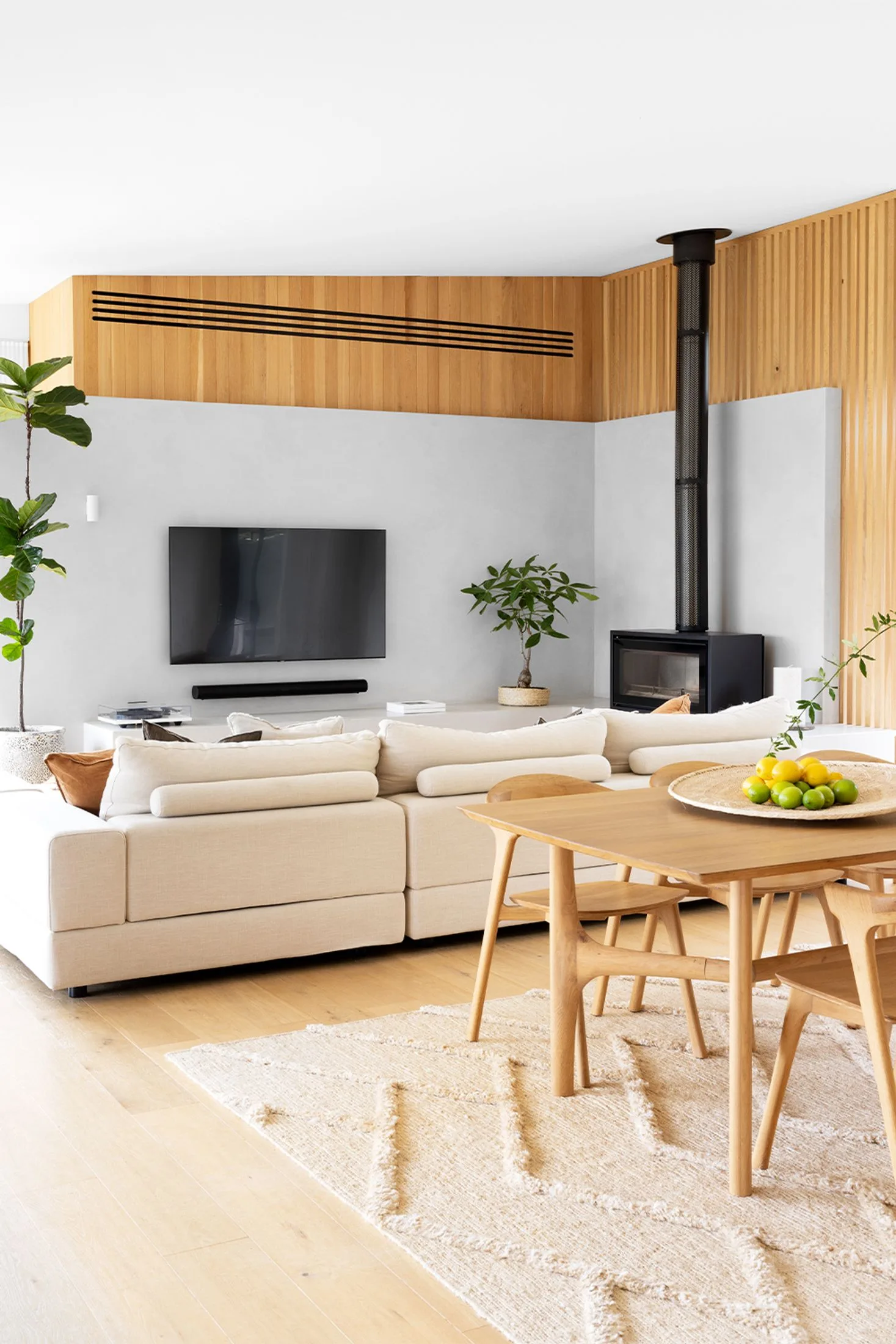
Timber, texture and a monochrome palette in this Japandi style living room. (Photography: Louise Roche / Styling: Kylie Jackes)
What is Japandi?
The pared-back aesthetics of Japanese and Scandinavian design come together in a union of inviting simplicity to create Japandi style. A connection to nature is key to this look that is gently bathed in simplicity and harmony. Here, we explain the design elements that make up Japandi style and how to strip back your decor to achieve this look – no matter how large or small your space.
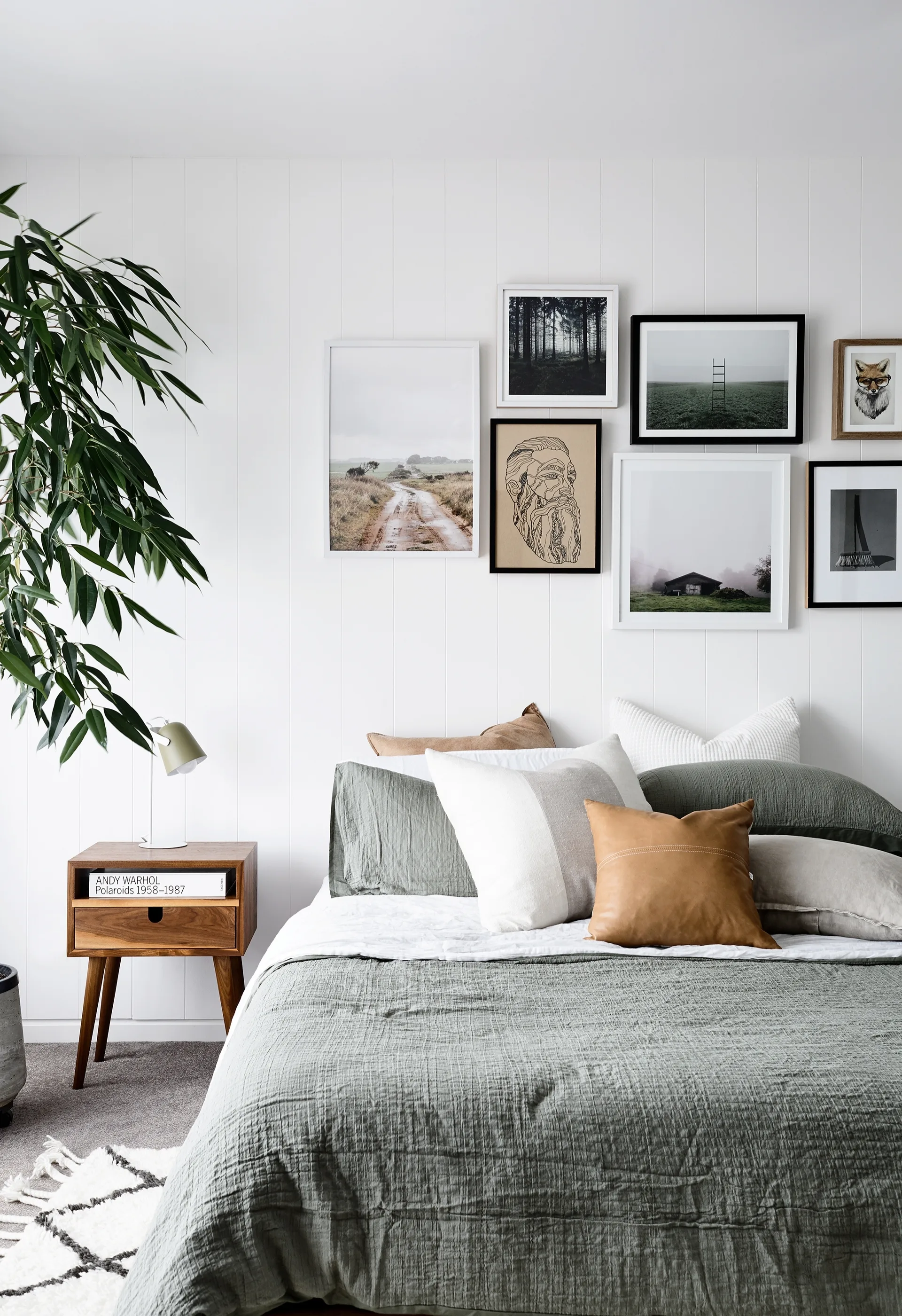
Evocative artworks above the bed are all characteristics of Scandi interiors and mostly connected to nature. Bedlinen features natural linens, leather and fabrics in neutral tones. (Photography: Alex Reinders)
What are the characteristics of Japandi style?
Less is more when creating spaces to reflect Japandi style for an overall atmosphere of calm. While this is a look grounded in simplicity, there are several essential elements to get right.
1. A neutral, monochromatic colour palette
Natural linen, calming white, cream and touches of soft grey-green form the background to accent colours that speak to nature – sculptural branches, foliage and shapes in objects and artwork.
2. Natural materials
Timber features in furnishings, on walls and floors and are either very pale or deep and dark to harmonise with simple black and white accents in art and architecture. Textiles are formed from natural fibres, including linen, pure wool and soft cottons with highlights of natural leather.
3. Functional simplicity
Furniture, objects and fixtures offer functional simplicity without embellishment and are also grounded in nature – made from materials such as wood, stone and leather. A carefully crafted ceramic teapot is handmade to pour with perfection, while a low-slung armchair beckons relaxation and repose, placed alone by a window with a view to nature.
4. Minimal, handcrafted furnishings
Handmade furniture is a cornerstone of Japandi style, with antiques and the imperfections of time and use imparting imperfect, wabi-sabi characteristics. Worn timbers and textiles, selected for both purpose and pleasure are fundamental.
5. Serene spaces with natural light
The presence of natural light in interior spaces plays into the Japandi aesthetic and removes the need for extra light fittings. Large windows with views to nature lend themselves beautifully to this style.
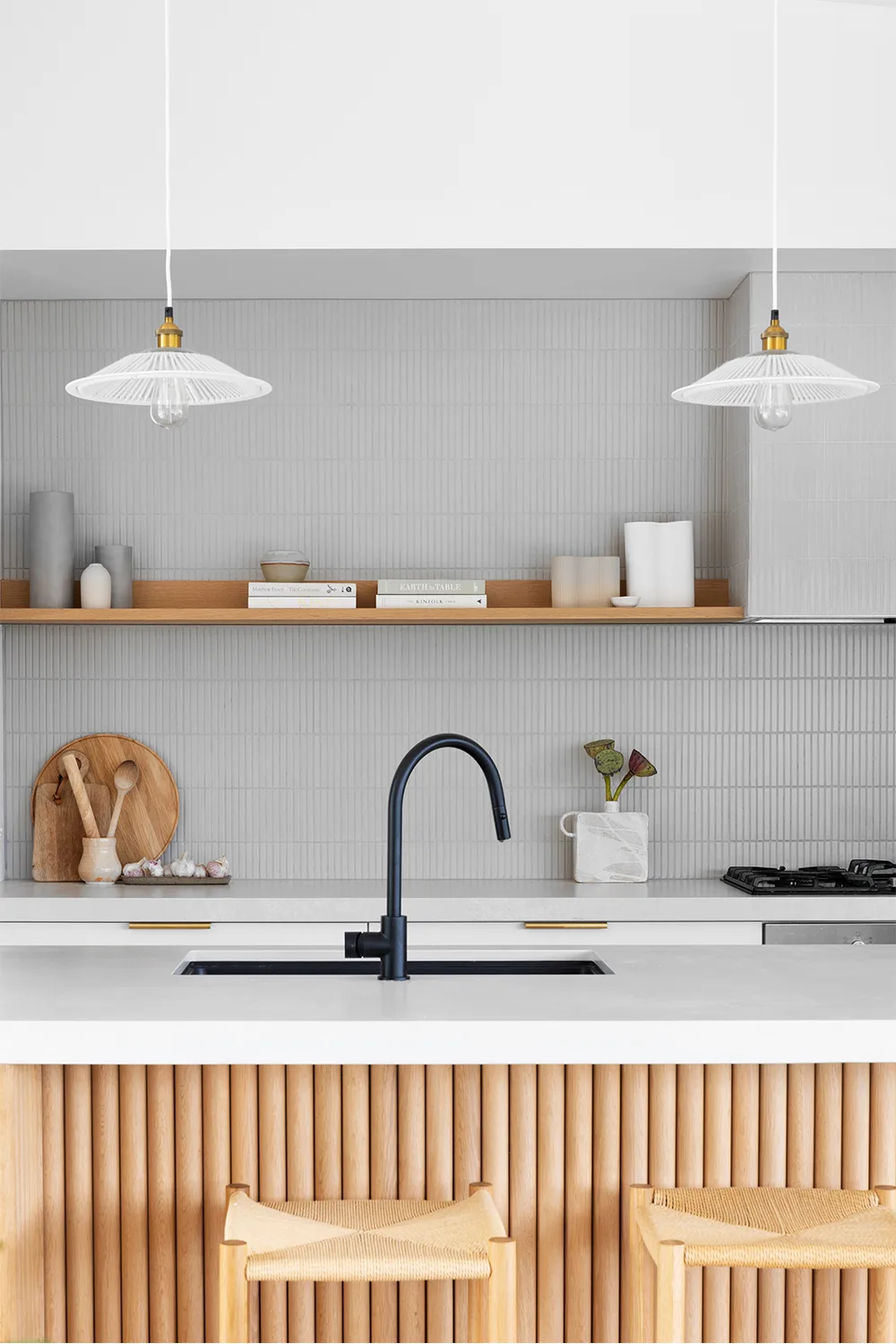
What is the difference between Japandi and Scandinavian interior design?
The purity of Japandi style speaks to both Japanese and Scandinavian design in essentials. The inclusion of sculptural forms in art and floral arrangements is distinctly Japanese, while the absence of words or motifs is more familiar to the Scandinavian style. Both channel the beauty of nature with clean lines and uncomplicated construction, softened by playful curves in furnishings.
Monochrome accessories mix with natural elements, such as sculptural branches, foliage and oriental shapes
Is Japandi style here to stay?
Modest in execution and timeless in essence, Japandi style is steeped in history that will stand the test of time. With carefully curated collected pieces, hand-finished surfaces and the absence of clutter, spaces are inviting and personal, minimal but not stark.
The soulful, neutral base of a Japandi style interior can be accented with soft colour as trends evolve and change. Smokey greys and blue give way to mint greens that may fade to sage and eucalyptus tones. Black-framed windows and doors are minimal and focus on functionality over fuss.
Shop Japandi homewares

01
Bruno Chest in Solid American Oak
$2,499, IconByDesign
Also available in 5- and 9-drawer units, the Bruno stamps Japandi style onto any room scheme with quiet simplicity of design. Inset handles, solid American oak timber and a streamlined profile that would be equally at home in an entrance hall, bedroom, living or dining room for quintessential Japandi style.
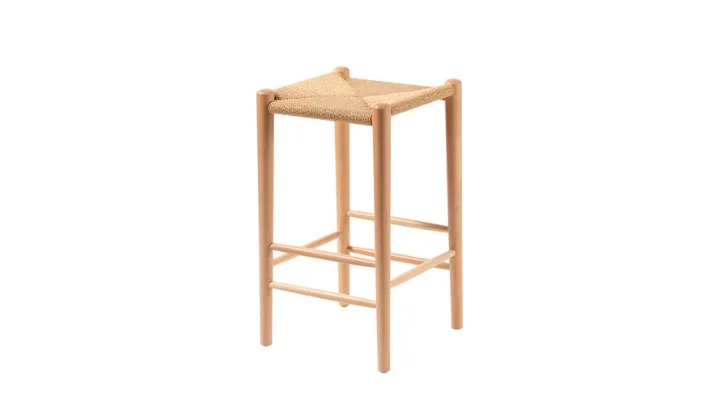
02
Hans Wegner Replica Kitchen Stool
$279, Temple & Webster
The woven seat and simple, pale timber legs would sit prettily in a Japandi-style kitchen.
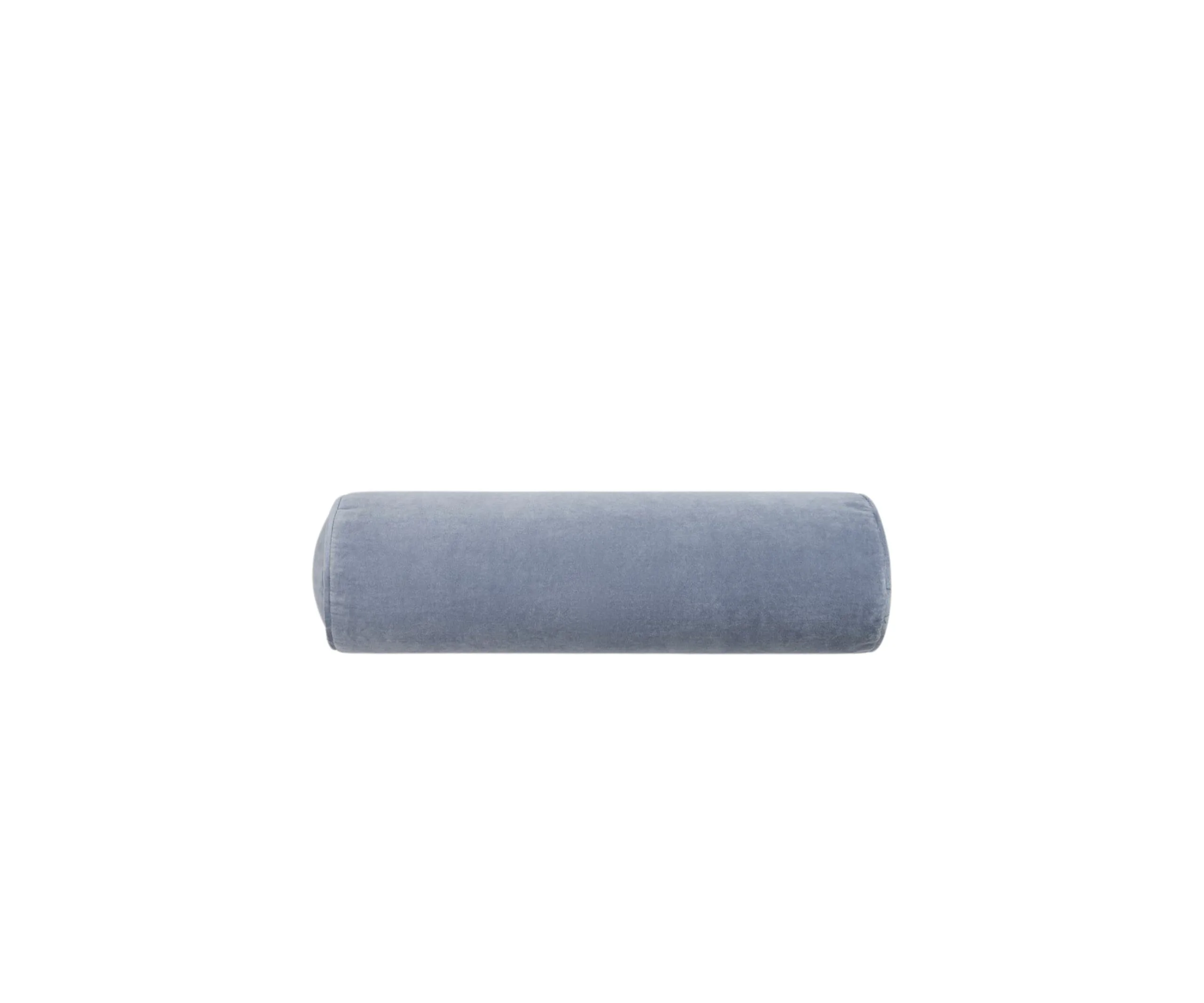
03
Pia Organically Grown Cotton Velvet Cushion in Deep Lake
$129, Country Road
From bedroom to reading nook, accent with a touch of nature with this pale, sky-toned velvet bolster cushion. Along with available colours of Jade, Sienna and Nutmeg, this softest of blues looks quietly calm when set against the light-toned timbers of the Japandi palette.
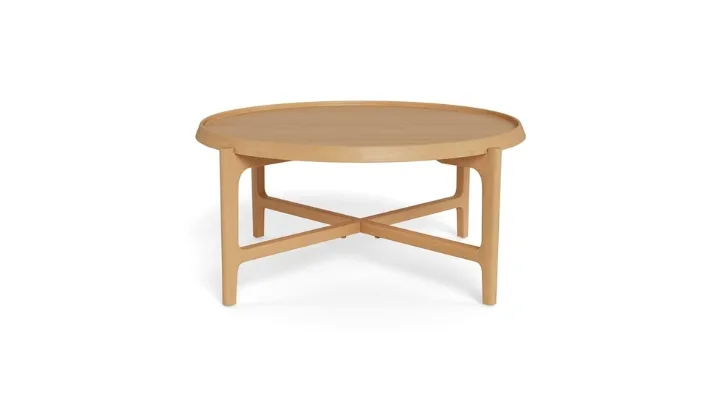
04
Round coffee table
$399, Freedom
Light timber, a minimal profile and softly cuved legs make this round coffee table a perfect fit in a Japandi living room.

05
Eva ‘Everyday’ 4 seater sofa in Oatmeal
$2710, Myer
Sturdy and comfortable with gently curved edges, curl up on this minimal, modular sofa. Built on a sustainably sourced timber frame, covers are removable and washable to withstand daily use.
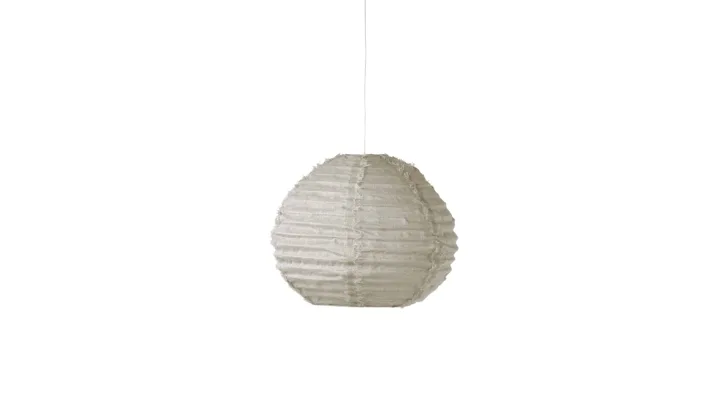
06
‘Cloud’ fringed ball pendant in Dove
$179, Aura Home
Crafted from 100% pure linen, the soft folds of this elegant pendant light will shed softly diffused light into your Japandi living zones.

07
Coco Serving Bowl in Alabaster
$89.95, Seed Heritage
A hand-dipped ceramic glaze wash brings movement to the table in monochromatic charcoal.

08
Layla Handwoven Loop Pile Wool Rug in Snowcap White 200 x 290
$2,249, IconByDesign
Ground your entire Japandi design scheme with this warming 100% pure New Zealand wool rug. Choose from four neutral colours to pick up the tones or any accents in your space for a cohesive, decorated look.

